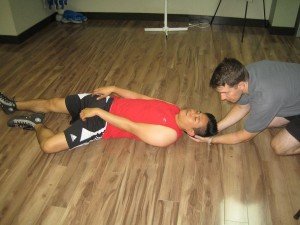The passing through of electric current to the human body can cause an injury or physiological reaction known as electric shock. It occurs when the human body have a direct contact to the source of electricity. “Live wires” can constitute a risk of electric shock. Lightning strikes are the natural form of electric shock. Exposure to electricity may result in no injury but or may result in death.
https://www.youtube.com/watch?v=R-mM18MEJlU
Symptoms of Electric Shock

- Any noticeable burns to the skin. Common points of contact are hands, heels and head.
- Pain that can be felt commonly at hands and feet.
- Any period of unconsciousness
- Confusion
- Difficulty breathing
- Seizures
- Tingling sensation
- Numbness
- Speech problems
Always remember the following while waiting for medical help.
- Turn off the source of electricity, if possible.
- Use a nonconducting object such as things that is made up of cardboard, plastic or wood to move the source away.
- Begin CPR if the person shows no signs of circulation, such as breathing.
- Try to avoid the injured individual from becoming chilled.
- Put on bandage. Protect any burned parts with a sterile gauze bandage or a clean fabric.
Consider to seek a medical care for the following:
- Burns that are not healing well
- Increase redness, soreness or drainage to the burns
- Pregnant women who experienced electric shock
- Last tetanus booster was more than 5 years ago
Exam and Tests for patients who experienced electric shock
- ECG to check the heart
- Complete blood count
- Urine test
- X rays
- CT Scan
Prevent electric shock in your home
- Know how electricity works.
- Don’t overload circuits.
- Know your limits. Any serious electrical issues should be asked to a professional electrician.
- Find out electricity requirement. Know the specific circuit breakers fuses and even light bulbs that are allowed to be used at home.
- Turn the electricity off. Always put a main electrical panel at home which allows you to cut the flow of the electricity to the entire house.
- Cover sockets and outlets. It wise to use cover sockets especially when you have children at home. It helps keep curious fingers from injury.
- Avoid water. Electricity and water do not mix well, so appliances should be kept away from any moisture.
- Turn on the power back. Once finished doing necessary repairs, you may switch on your panel to try the appliance or outlet you’ve just repaired.